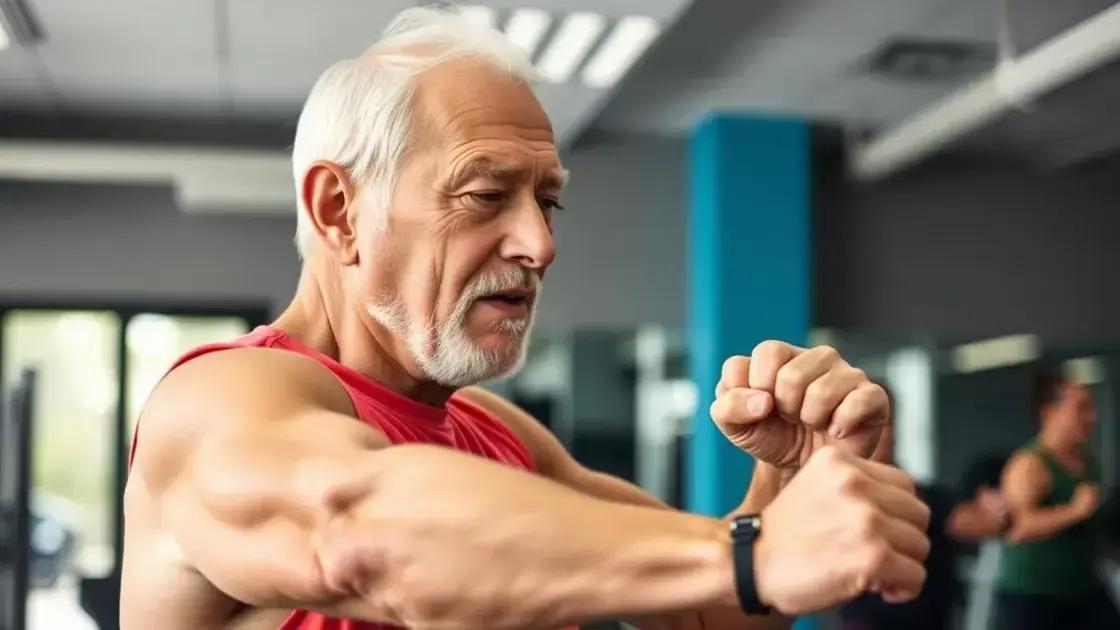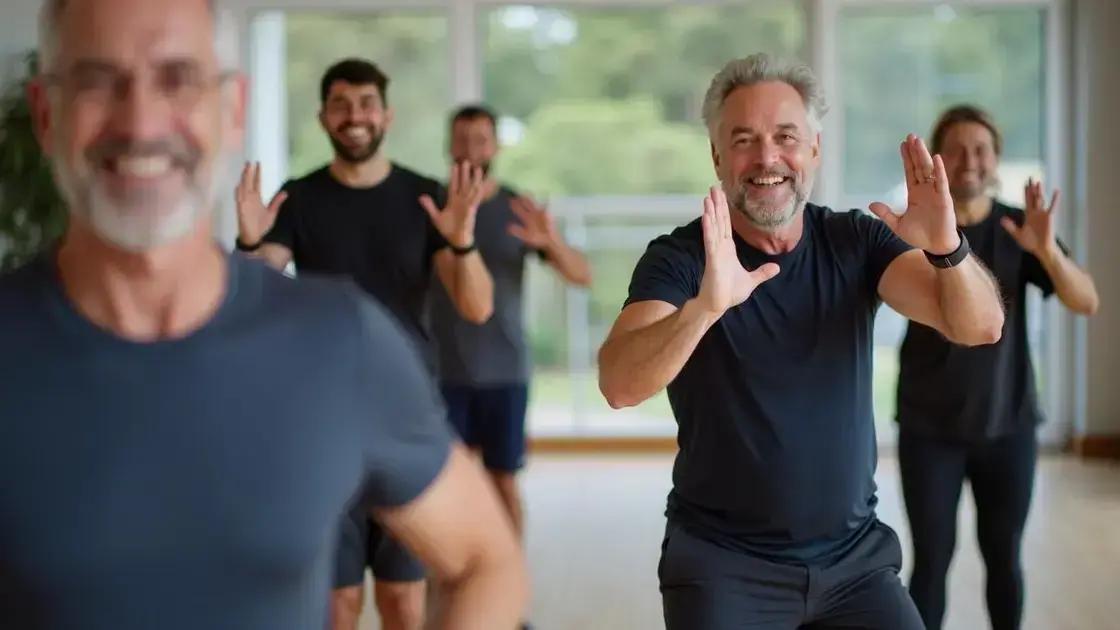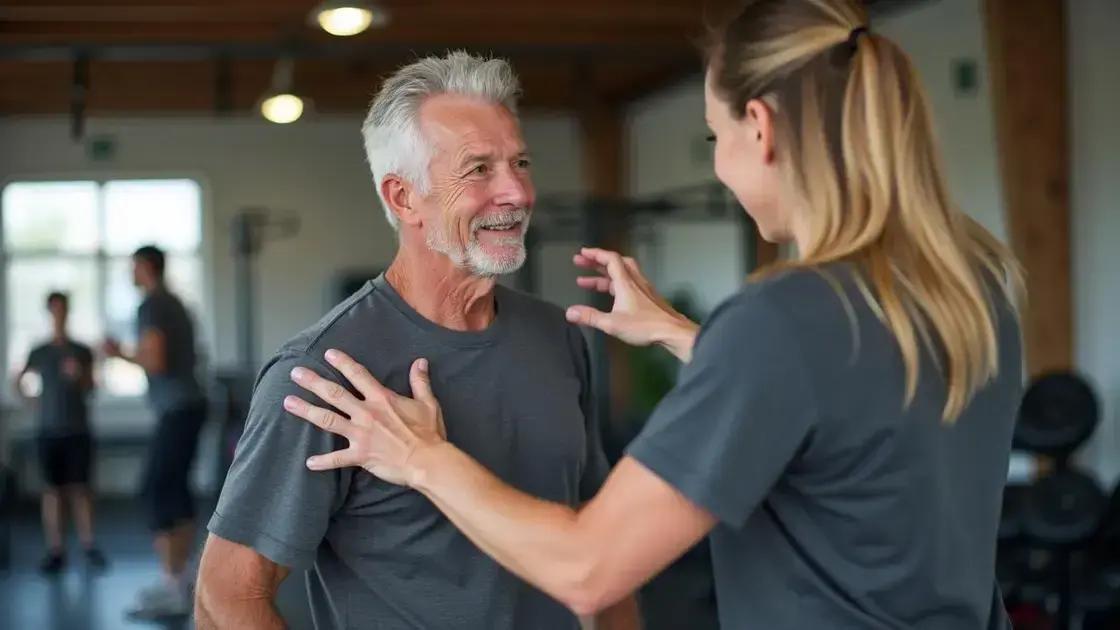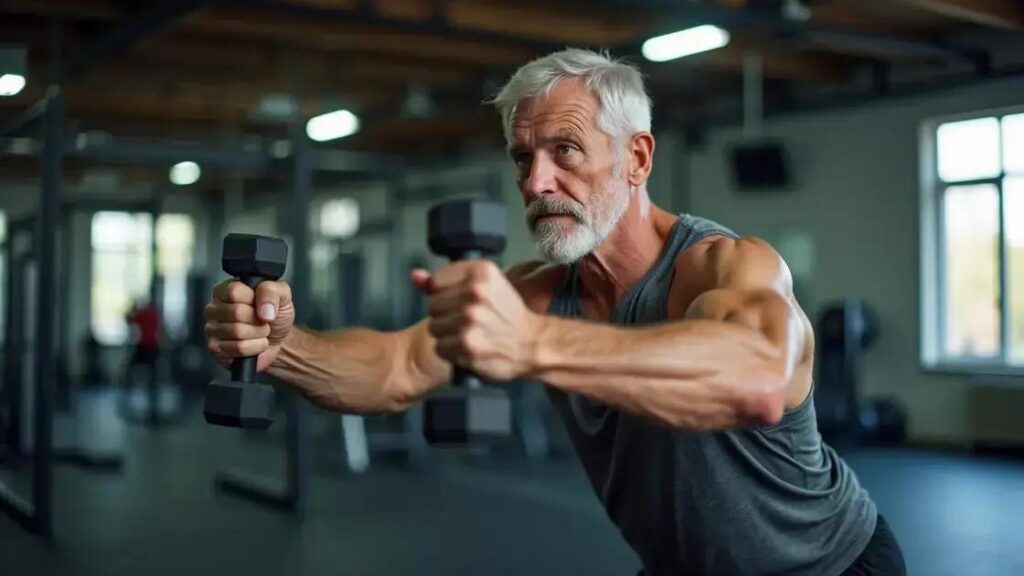High-Intensity Interval Training (HIIT) programs are adapting for older men by offering customized workouts, emphasizing recovery, and incorporating low-impact exercises, making it a safe and effective way to improve cardiovascular health, strength, and overall well-being.
As men age, maintaining fitness becomes increasingly crucial, and high-intensity interval training (HIIT) is evolving to meet their needs. This dynamic training method, once aimed mainly at younger audiences, is now tailored for older adults seeking effective ways to improve cardiovascular health, build strength, and enhance overall well-being. In this article, we’ll delve into how HIIT programs are adapting specifically for older men, the benefits they offer, and essential tips to get started safely.
Understanding High-Intensity Interval Training

High-Intensity Interval Training (HIIT) is a workout method where you alternate between intense activity and rest or lower-intensity phases. This type of training is efficient, making it popular among fitness enthusiasts. For older men, understanding HIIT is key to safely reaping its benefits.
What is HIIT?
HIIT workouts typically last between 15 to 30 minutes, featuring exercises like sprinting, cycling, or bodyweight movements. The idea is to push your body during high-intensity intervals, followed by periods of rest. This maximizes calorie burn and improves cardiovascular health.
How HIIT Works
The scientific principle behind HIIT is that short bursts of hard work can lead to greater improvements in aerobic and anaerobic fitness compared to traditional steady-state exercises. Because it involves short bursts of exertion, HIIT can be easier to fit into busy schedules while still delivering results.
Why HIIT is Adapting for Older Men
Many older men face challenges like joint issues or lower stamina. Therefore, HIIT programs are adapting to include gentler movements and extended rest periods. By offering modifications, trainers help prevent injury while still providing a rigorous workout.
Common HIIT Exercises for Older Men
Examples of HIIT exercises suitable for older men include walking briskly followed by a slower pace, using resistance bands, or performing modified push-ups. These activities can improve muscle strength, flexibility, and overall fitness without overstraining the body.
Benefits for Older Men

High-Intensity Interval Training (HIIT) provides several important benefits specifically for older men. As they age, staying active becomes crucial to maintain health and vitality. Incorporating HIIT into their fitness routine can lead to significant advantages.
Improved Cardiovascular Health
HIIT has been shown to enhance cardiovascular fitness. It helps lower blood pressure and improves heart function. These benefits are especially important for older men who may be at greater risk for heart-related issues.
Increased Strength and Muscle Mass
Another benefit of HIIT is that it helps build and maintain muscle mass. As men age, they naturally lose muscle. HIIT resistance exercises can counteract this effect, making daily activities easier and enhancing quality of life.
Enhanced Metabolism
HIIT workouts can boost metabolism, leading to increased calorie burn even after exercise. This is beneficial for weight management, aiding older men in maintaining a healthy weight.
Improved Flexibility and Balance
Incorporating different movements in HIIT can help improve flexibility and balance, which are vital to preventing falls and injuries. These components are particularly significant as men age.
Mental Benefits
HIIT can also enhance mental well-being, reducing symptoms of anxiety and depression. The sense of accomplishment from completing a tough workout can boost self-esteem and improve mood.
How Programs Are Evolving

As fitness experts recognize the unique needs of older men, HIIT programs are evolving to provide safer and more effective workout options. Traditional HIIT routines often focused on high-impact exercises, but many programs are now incorporating modifications to accommodate aging bodies.
Customized Workouts
Programs are increasingly offering personalized workouts. These plans take into account the individual’s fitness level, medical history, and specific goals. By doing this, trainers can ensure that older men get the best possible experience without risking injury.
Focus on Recovery
Modern HIIT programs are emphasizing recovery periods. Older men require longer rest intervals to allow their bodies to recover fully. This change helps prevent fatigue and reduces the likelihood of injuries.
Incorporation of Low-Impact Exercises
To make HIIT safer, many programs include low-impact exercises. These involve movements that are easier on the joints while still providing a robust workout. For example, exercises like cycling, swimming, and bodyweight exercises are gaining popularity.
Use of Technology
Technology plays a vital role in the evolution of HIIT programs. Many fitness apps are designed to provide structured intervals, monitor heart rates, and suggest modifications, making it easier for older men to follow along and stay motivated.
Community Support
Finally, there is a growing emphasis on community in HIIT settings. Group classes or online support groups create a social environment that encourages older men to stay engaged and motivated. Many find that exercising with others helps enhance their overall experience.
Getting Started Safely with HIIT

Getting started safely with High-Intensity Interval Training (HIIT) is essential for older men. First, consult a doctor before beginning any new exercise program, especially if there are existing health concerns.
Start Slowly
When beginning HIIT, it is important to start slowly. Gradually increase the intensity and duration of workouts. This helps the body adapt and lowers the risk of injury.
Focus on Form
Maintaining proper form during exercises is crucial. Poor form can lead to injuries, especially in high-impact activities. Consider working with a trainer to learn the correct techniques for exercises.
Warm-Up and Cool Down
A good warm-up prepares the body and muscles for more intense activity. Spend 5 to 10 minutes warming up with light cardio and dynamic stretches. After the workout, cool down with gentle stretches to help the body recover.
Listen to Your Body
It is important to listen to your body during HIIT workouts. If something feels wrong or painful, stop the exercise immediately. Pay attention to signs of fatigue and modify workouts accordingly.
Stay Hydrated
Staying hydrated is key during any workout. Drink water before, during, and after sessions to keep the body functioning well. Dehydration can lead to fatigue and decreased performance.
Join a Class
Joining a HIIT class tailored for older adults can provide guidance and motivation. Fitness instructors are trained to help people exercise safely and effectively while fostering a supportive environment.
In Summary: Embracing HIIT for a Healthier Future
High-Intensity Interval Training (HIIT) programs are evolving to meet the needs of older men, providing safe and effective workouts that enhance overall health and well-being.
Understanding the benefits of HIIT, such as improved cardiovascular health, increased strength, and better mental well-being, makes this exercise method an excellent choice for aging populations.
Getting started safely is crucial, and older men are encouraged to consult with healthcare professionals, begin at a comfortable pace, and focus on proper technique.
With the right approach, older men can harness the power of HIIT to lead healthier and more active lives while enjoying the journey of fitness and community support.
FAQ – Frequently Asked Questions About HIIT for Older Men
What is High-Intensity Interval Training (HIIT)?
HIIT is a workout method that alternates between short bursts of intense exercise and periods of lower intensity or rest.
What are the benefits of HIIT for older men?
HIIT can improve cardiovascular health, increase strength and muscle mass, boost metabolism, and enhance mental well-being.
How do I get started safely with HIIT?
Consult a doctor, start slowly, focus on form, and ensure proper warm-up and cool down before and after workouts.
Can I modify HIIT exercises for my fitness level?
Yes, many HIIT programs offer modifications to accommodate different fitness levels, especially for older adults.
Is it necessary to have a trainer for HIIT workouts?
While not necessary, working with a trainer can help ensure proper form and minimize the risk of injury.
How long should a HIIT session last?
HIIT sessions can be effective in as little as 15-30 minutes, depending on the intensity and exercise selections.













